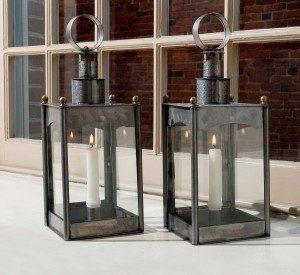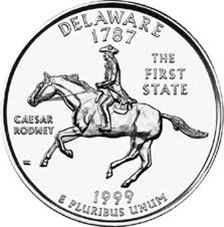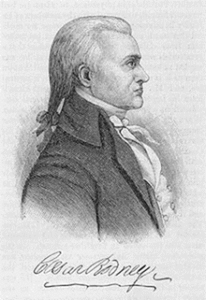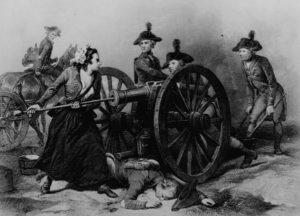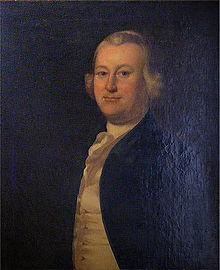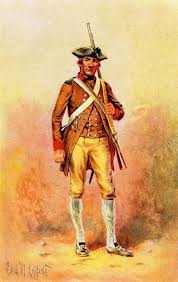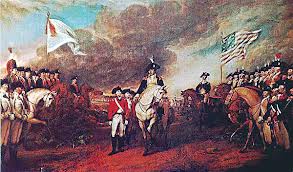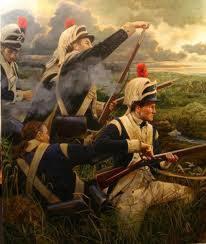 Deborah Sampson was born on December 27, 1760 in Winnetuxet, later called Plympton, Massachusetts to Jonathan and Deborah Sampson. She was related to Governor William Bradford of the Plymouth Plantation. The oldest of three sisters and three brothers, her contributions to the American Revolution would make her our nation’s first female soldier.
Deborah Sampson was born on December 27, 1760 in Winnetuxet, later called Plympton, Massachusetts to Jonathan and Deborah Sampson. She was related to Governor William Bradford of the Plymouth Plantation. The oldest of three sisters and three brothers, her contributions to the American Revolution would make her our nation’s first female soldier.
Deborah was five when she first went to live her mother’s cousin, Ruth Fuller of Middle borough, Massachusetts. Ruth died when Deborah was eight. She then went to live Mrs. Thatcher, the 80 year old widow of a First Congregational Church minister. A local minister noticed how hard Deborah worked and made arrangements for her to serve the household of Benjamin Thomas.
Deborah took care of Benjamin Thomas, his wife and their eight sons until she was 18 years old. During her time with the Thomas family, she worked in their home and fields. During the winter when there wasn’t much work to be done, she was allowed to attend school. When she was not in school, she would stay up after everyone had gone to bed and study the school books the Thomas boys brought home. At the Thomas’ home, she learned to cook, spin, weave, how to run farm equipment and how to shoot a musket. She would go along with the Thomas sons when they went hunting and learned to shoot just as good as they could. Deborah stood about 5 foot eight inches tall, was heavy boned, very strong and of light complexion.
Deacon Thomas taught his children how to use money wisely. He gave every child some lambs to raise and sell and he included Deborah. She was very wise with her lambs, selling them for the highest price she could get. She kept her money hidden in a handkerchief.
Deborah was ten years old when the Boston Massacre happened in 1770 and thirteen years old in 1773 at the time of the Boston Tea Party. The citizens of Boston refused to pay for the tea dumped in the ocean and in 1774 King George III issued the Intolerable Acts. When the people of Boston started talking about how they would starve under King George’s laws, Deborah planted a garden for herself and the Thomas family.
On December 16, 1775, the official start of the Revolutionary War, Deborah made a decision to fight in the War. She was sixteen years old when the Declaration of Independence was signed in 1776. The men and boys from all around were joining the militia or the Continental Army led by General George Washington. By the time Deborah was eighteen, the United States was losing many battles and France had just decided to join with the Continental Army.
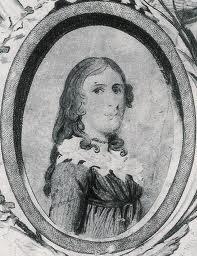 She left the Thomas’ home in 1779 and became a teacher in a Middleborough public school. She still thought about joining the Continental Army, but didn’t really know how she could do it. Then in the winter of 1780, Mr. Thomas came for a visit and told her about two of his sons being killed in Virginia when they were fighting with Marquis de Lafayette. She had grown close to all the Thomas boys and this is when she committed to serving with the Continentals.
She left the Thomas’ home in 1779 and became a teacher in a Middleborough public school. She still thought about joining the Continental Army, but didn’t really know how she could do it. Then in the winter of 1780, Mr. Thomas came for a visit and told her about two of his sons being killed in Virginia when they were fighting with Marquis de Lafayette. She had grown close to all the Thomas boys and this is when she committed to serving with the Continentals.
Deborah had taken a room from Mr. and Mrs. Benjamin Leonard and towards the end of 1781, she decided she would try to enlist in the Continental Army. Taking some clothes from Samuel, the son of Mr. and Mrs. Leonard, she tested her disguise by going to visit her mother. When her mother didn’t recognize her, Deborah Sampson knew she could sneak into the Continental Army.
Finally, on May 20, 1782 at the age of twenty-one Deborah Sampson enlisted in the Fourth Massachusetts Regiment of the Continental Army at Bellingham, Massachusetts, as Robert Shurtleff, which was the name of her oldest brother who had died at the age of eight. Deborah was almost immediately detected when noticed she held the quill with her finger in that funny position, like a female. No one else seemed to notice and Deborah Sampson, otherwise known as Robert Shurtleff, was now a soldier with the Continental Army for the next three years of her enlistment. Three days later she was officially part of Captain George Webb’s company. She was soon excommunicated from the Baptist Church, because the people of Middleborough had heard she was dressing as a man and serving in the Army.
Her first narrow escape from discovery was when she was altering her poorly fitting uniform, and was observed to be very good with a needle. She explained it away by stating there were no girls in her family, so as a youngest she had to learn how to sew.
Her regiment was sent to West Point, New York. During a scouting party to try to find food for her regiment, she was shot in the leg by Loyalists who caught her stealing from a cave near Tarrytown. In order to maintain her disguise, Deborah refused to see a doctor and took care of her own wound.
She was at West Point for eighteen months and fought in several battles. Deborah was injured two more times. Once near Tarrytown, her head was cut with a sword and then again near Eastchester. This time she was hit in the thigh by a musket ball was carried to the hospital. But, once there, she showed the surgeon the lesser wound to her head, and he released her. She tried to dig the musket ball out of her thigh with her pen knife! Failing that, she nursed the wound as best she could. But, having left the ball in the leg was to cause her trouble for the rest of her life. She again refused to be treated by a doctor and causing her injuries not to heal completely.
It wasn’t until she came down with a “malignant fever,” which was being passed around the soldiers, that she was forced to see a doctor at a hospital in Philadelphia. Dr. Binney examined her and discovered she was not a man. He didn’t tell anyone, but took her to his own home where she could get better care. Once she was well again, Dr. Binney met with her commanding officer.
Deborah Sampson knew right away that Dr. Binney had told her commanding officers, but on October 25, 1783, almost two months after the Peace Treaty of Paris was signed, she went to deliver the letter to General Washington. He was very nice and didn’t make it harder on her than it was already was. He handed her papers that honorably discharged her from the Army with some money so she could get home. He also gave her a note which gave her some of his good advice.
In 1784 she married Benjamin Gannett, a farmer, and they had three children, Earl, Mary and Patience. On January 20, 1792, the Massachusetts General Court ordered that she be paid 34 pounds for her service in the United States Army. In the order, the Court said: she “did actually perform the duty of a soldier. The said Deborah exhibit an extraordinary instance of female heroism, by discharging the duties of a faithful, gallant soldier, and at the same time preserving the virtue and chastity of her sex unsuspected and unblemished, and was discharged from the service with a fair and honorable character….” Later, in 1804, Paul Revere sent a letter to Congress telling them she should receive more money for her duties in the War. She then received a U.S. pension of four dollars per month. She also received a land grant for her military services as a Revolutionary Soldier.
In 1802, Sampson started traveling around the New England states telling about her experiences in the United State Military, always wearing her military uniform. She received a letter from George Washington inviting Robert Shurtliffe to visit Washington. In her travels, she lectured in Massachusetts, Rhode Island, and New York and was perhaps America’s first women lecturer. Deborah Sampson Gannett typically delivered a set of speeches about her wartime experiences, and at the conclusion of her speeches, would leave the stage, put on her “regimentals” and return to demonstrate the manual of arms, unheard of from a woman, and usually to the cheers of her appreciative audience.
Deborah Sampson Gannett died at the age of sixty-six on April 29, 1827 in Sharon, Massachusetts. After her death, her husband, Benjamin Gannett asked Congress to increase the pension. On July 7, 1838, (one year after Mr. Gannett died), Congress passed the “Act for the relief of the heirs of Deborah Gannett, a soldier of the Revolution.” Her children received $466.66 for the medical expenses she incurred from taking care of her own wounds so she would not be found out. On her tombstone is inscribed “Deborah wife of Benjamin Gannett, died April 29, 1827, aged 68 years”. On the reverse side of the stone it reads “Deborah Sampson Gannett, Robert Shurtleff, The Female Soldier Service 1781-1783.”
In May of 1983, then Governor Michael J. Dukakis, signed a proclamation which named Deborah Sampson, alias Robert Shurtleff, soldier of the American Revolution, the “Official Heroine of the State of Massachusetts.”
Contents taken from the following resources:
http://www.hobart.k12.in.us/cside/American%20Revolution/revbio/dsampson.htm
http://www.revolutionarywararchives.org/womansoldier.html

